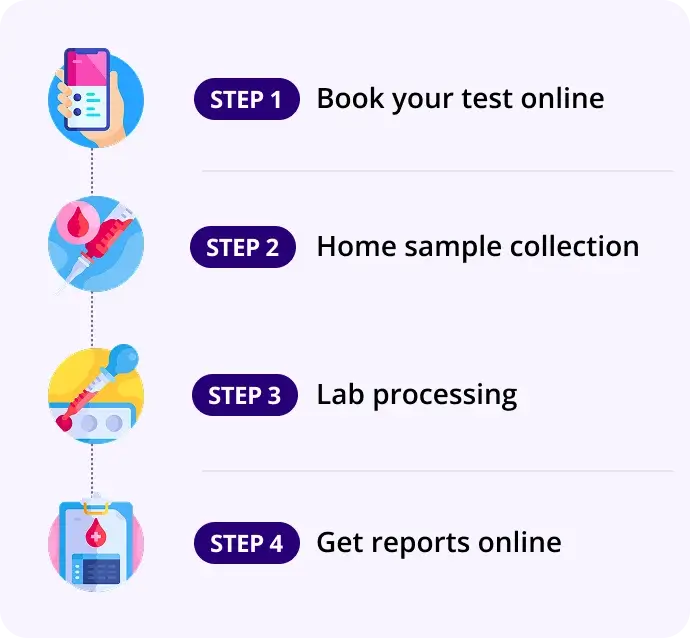High Sensitivity C-Reactive Protein (hs- CRP)
Report in 16Hrs
At Home
Fasting Required
Details
hs-CRP detects subtle inflammation and is used primarily to assess cardiovascular risk.
₹249₹750
67% OFF
🧪 What is hs-CRP?
High Sensitivity C-Reactive Protein (hs-CRP) is a blood test that measures very low levels of C-reactive protein, a substance produced by the liver in response to inflammation.
- Unlike standard CRP, hs-CRP detects subtle inflammation and is used primarily to assess cardiovascular risk.
- It reflects chronic low-grade inflammation that contributes to atherosclerosis.
❓ Why is the Test Done?
To:
- Evaluate risk of heart disease or stroke
- Detect low-grade systemic inflammation
- Monitor inflammation in metabolic syndrome, diabetes, or autoimmune diseases
- Supplement cardiac risk stratification with lipid profile, blood pressure, smoking status, etc.
📊 Normal Range / Interpretation
hs-CRP Level (mg/L) | Risk Category |
|---|---|
< 1.0 | Low risk of cardiovascular disease |
1.0 – 3.0 | Moderate risk |
> 3.0 | High risk – significant inflammation and possible cardiovascular risk |
> 10.0 | Suggests acute inflammation or infection – investigate further |
Note: Values may be elevated by infections, trauma, or recent illness – repeat testing after resolution is advised.
📈 Interpretation of Results
- < 1 mg/L: Minimal vascular inflammation – low risk for heart disease
- 1–3 mg/L: Mild inflammation – moderate risk, requires lifestyle/diet monitoring
- > 3 mg/L: Significant inflammation – higher risk of heart attack or stroke
- > 10 mg/L: Not useful for cardiac risk – may indicate infection, trauma, autoimmune flare
hs-CRP should not be used alone – it complements other risk factors.
🧠 Associated Organs & Conditions
Organ/System | Conditions |
|---|---|
Cardiovascular | Atherosclerosis, coronary artery disease, stroke |
Liver (CRP production) | CRP is synthesized in the liver in response to IL-6 |
Metabolic | Diabetes, obesity, metabolic syndrome |
Autoimmune | Lupus, rheumatoid arthritis (complementary to CRP/ESR) |
Others | Chronic infections, cancers, smoking, high BMI |
🔄 Related / Follow-Up Tests
- Lipid Profile (Cholesterol, LDL, HDL, Triglycerides)
- HbA1c, Fasting Glucose – for diabetes/metabolic risk
- Blood Pressure – for total CVD risk assessment
- Standard CRP or ESR – if acute infection or inflammation suspected
- Cardiac markers (Troponin, NT-proBNP) – if ACS suspected
- Liver Function Tests – as CRP is liver-synthesized
✅ Fasting Required?
Test | Fasting Requirement |
|---|---|
hs-CRP | ✅ Fasting preferred (8–12 hours) to eliminate influence of recent meals, though not strictly mandatory |
📝 Summary Table
Parameter | Description |
|---|---|
What | Measures low levels of C-Reactive Protein to assess chronic inflammation and cardiovascular risk |
Why | To evaluate heart disease risk, detect low-grade inflammation |
Normal Range | <1 mg/L (low risk), 1–3 mg/L (moderate), >3 mg/L (high) |
High Result | Increased cardiovascular or systemic inflammation risk |
Follow-up Tests | Lipid profile, glucose, CRP, ESR, LFTs, cardiac markers |
Associated Conditions | Heart disease, diabetes, autoimmune disease, obesity |
Fasting Required | ✅ Preferred, especially with lipid profile |
How our test process works!

